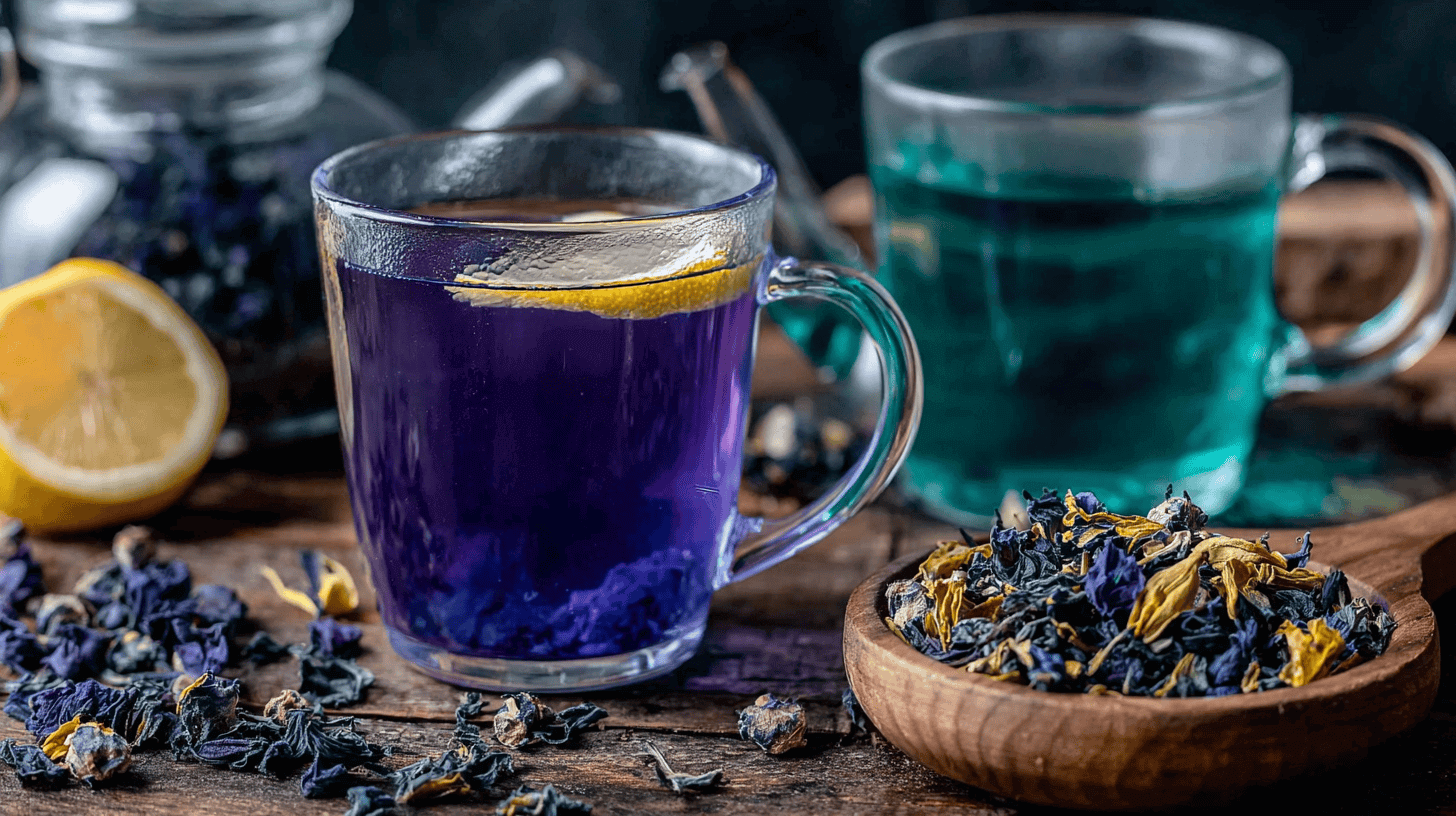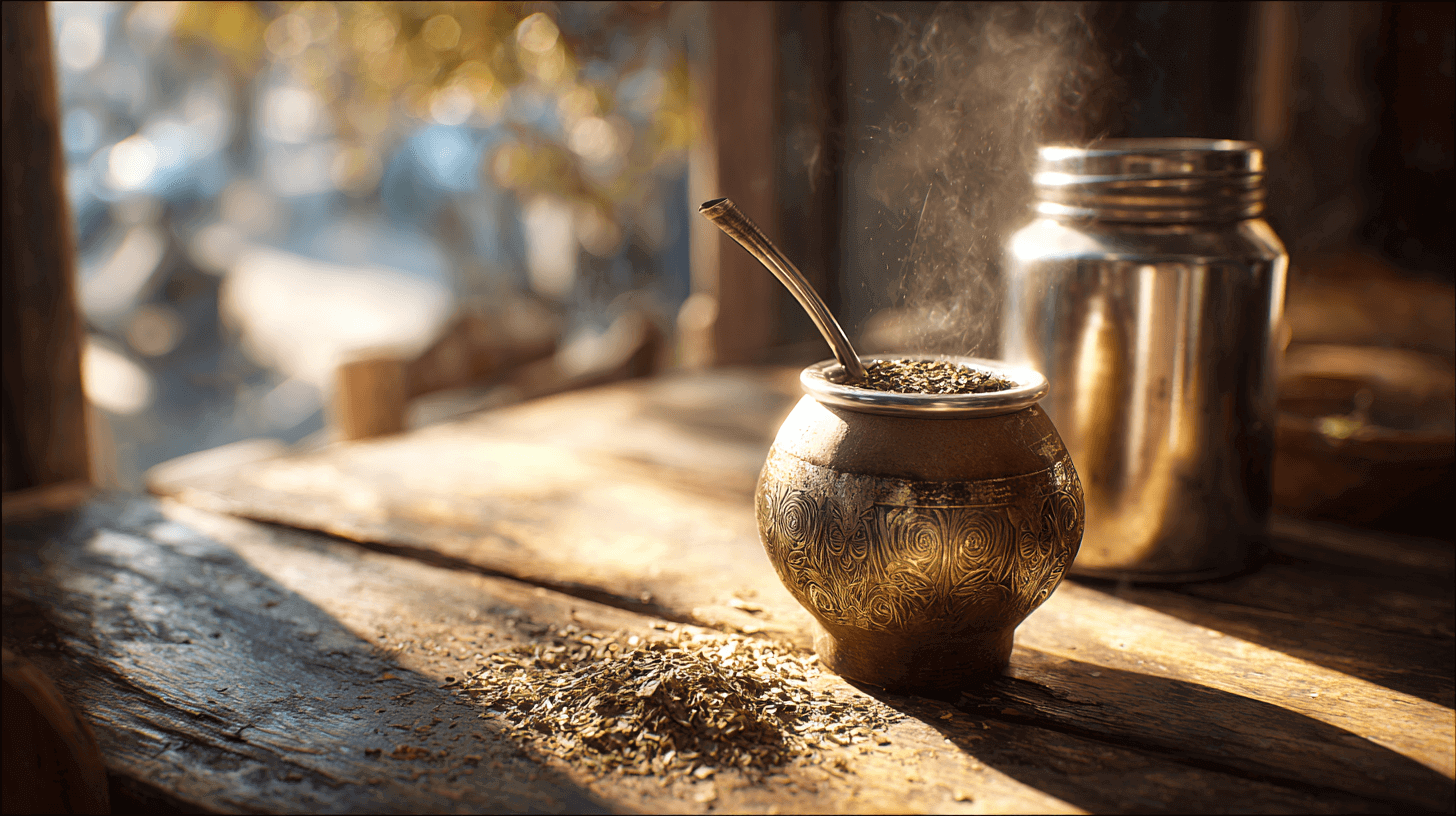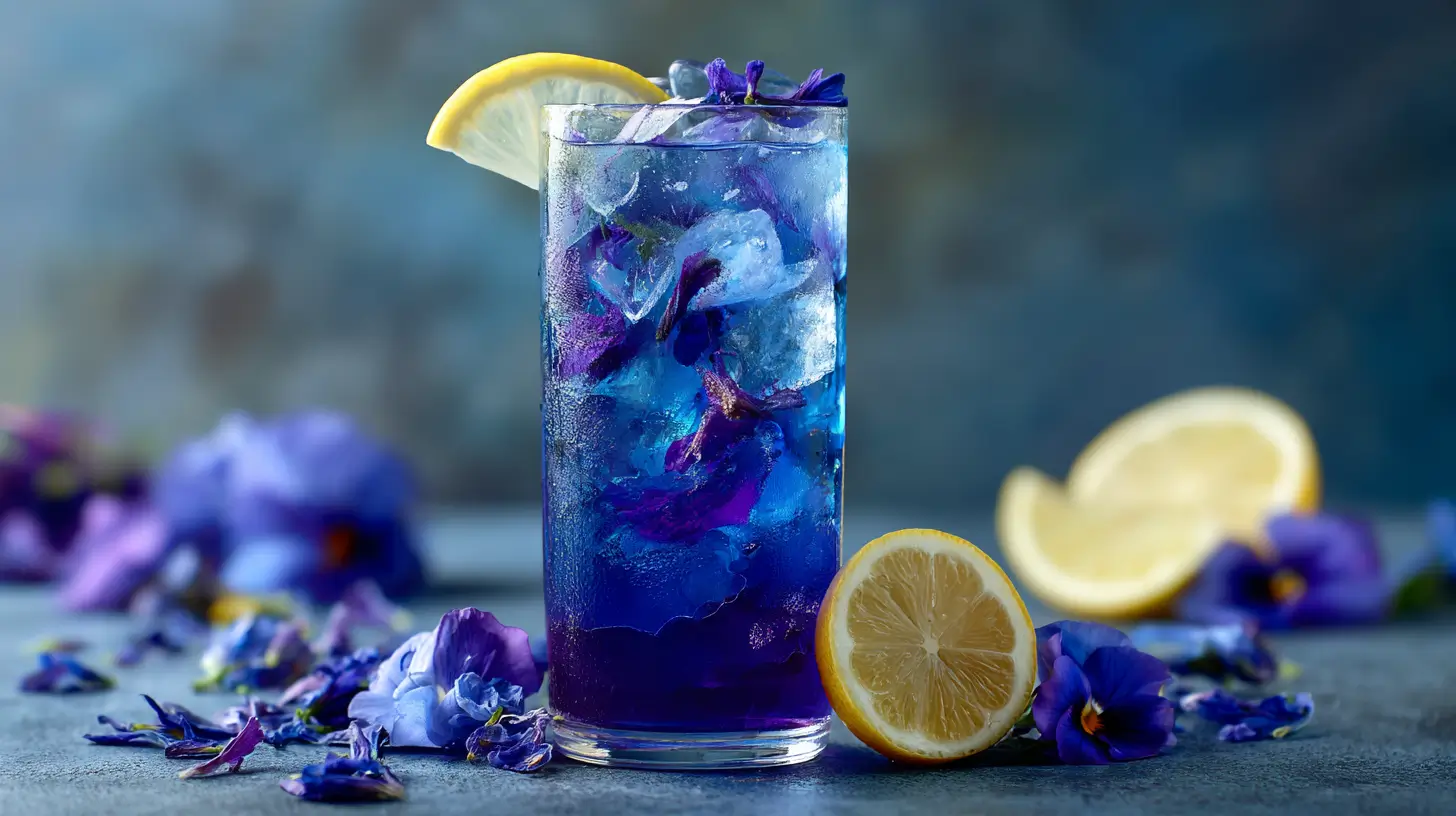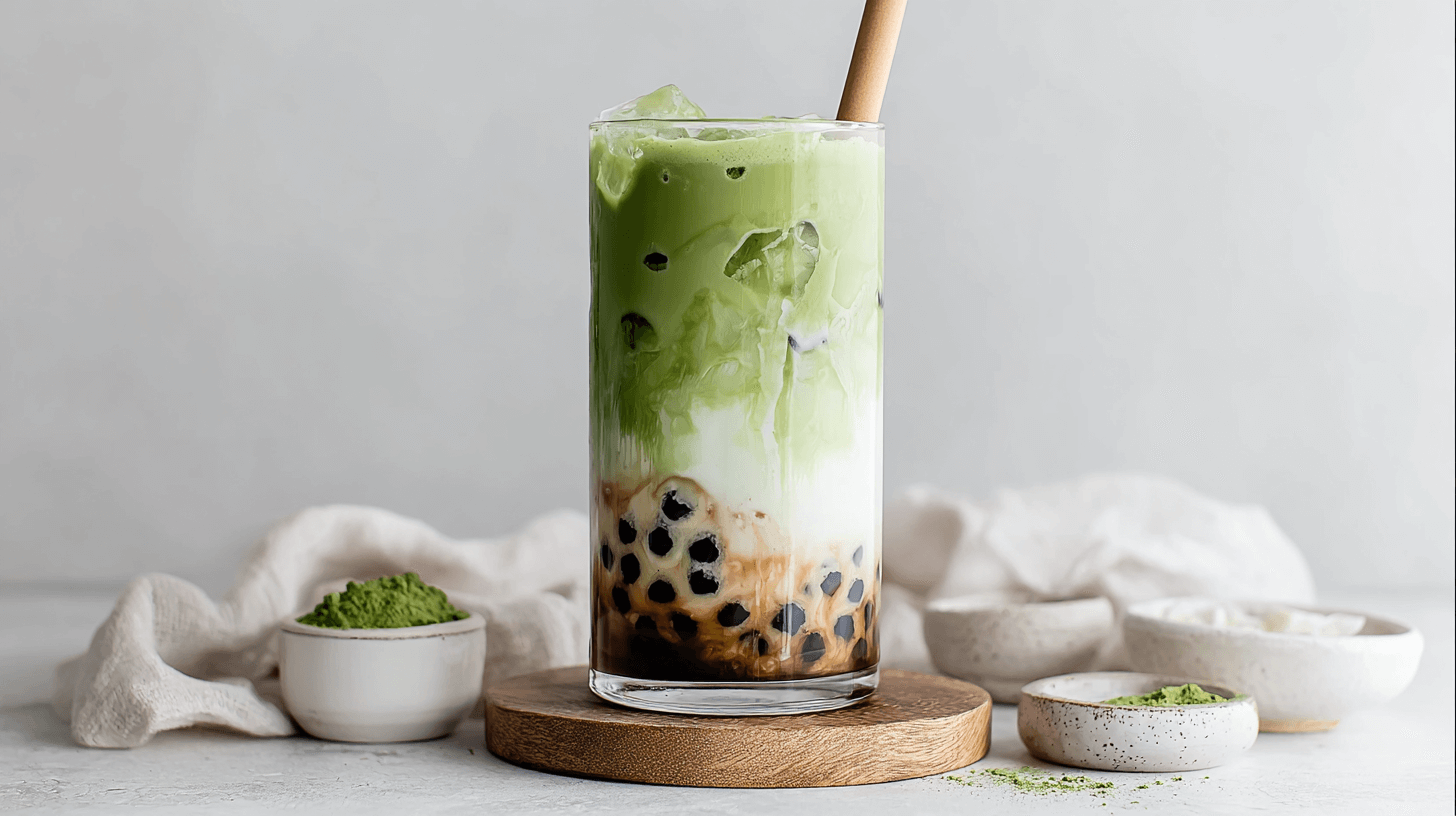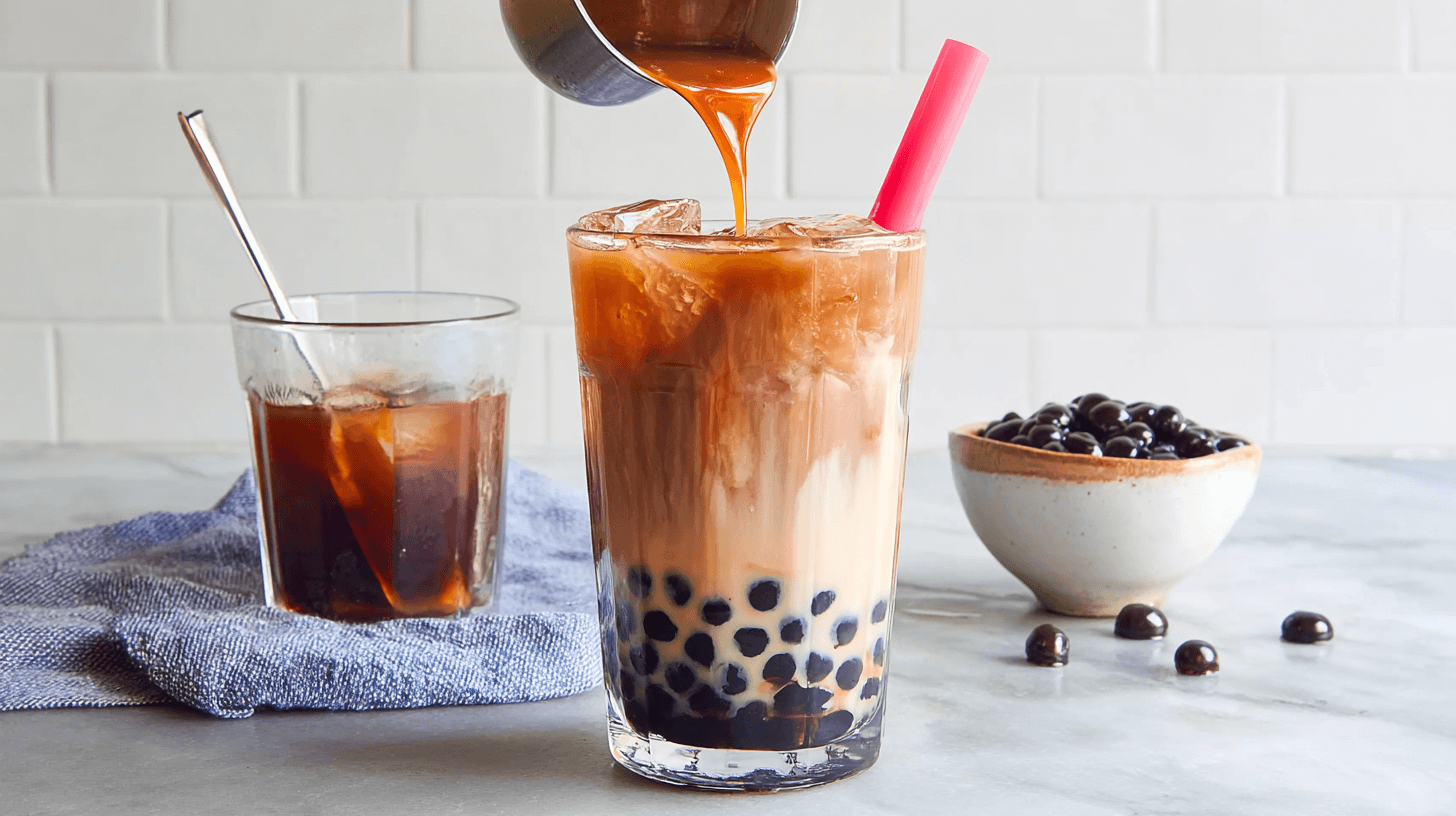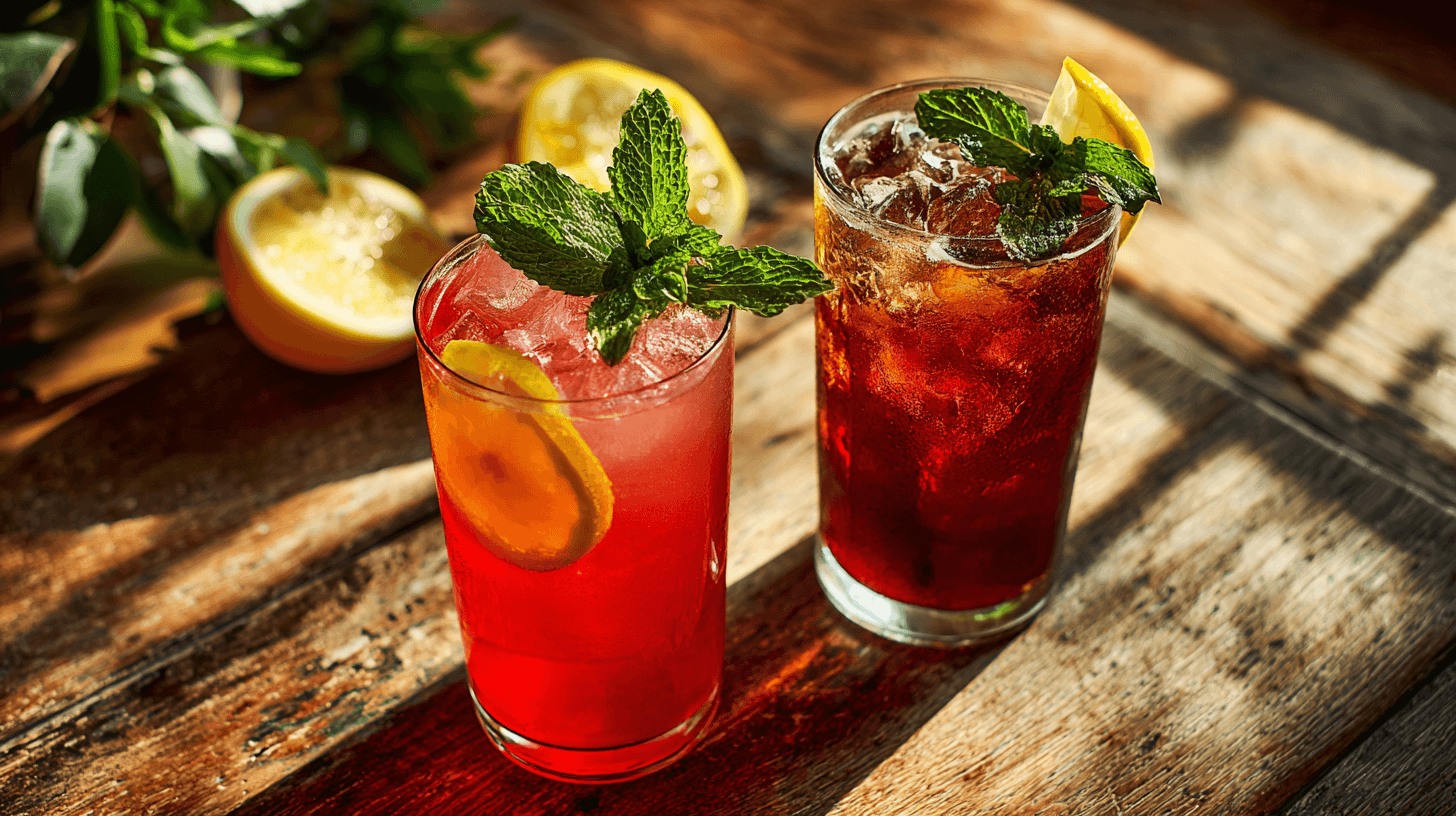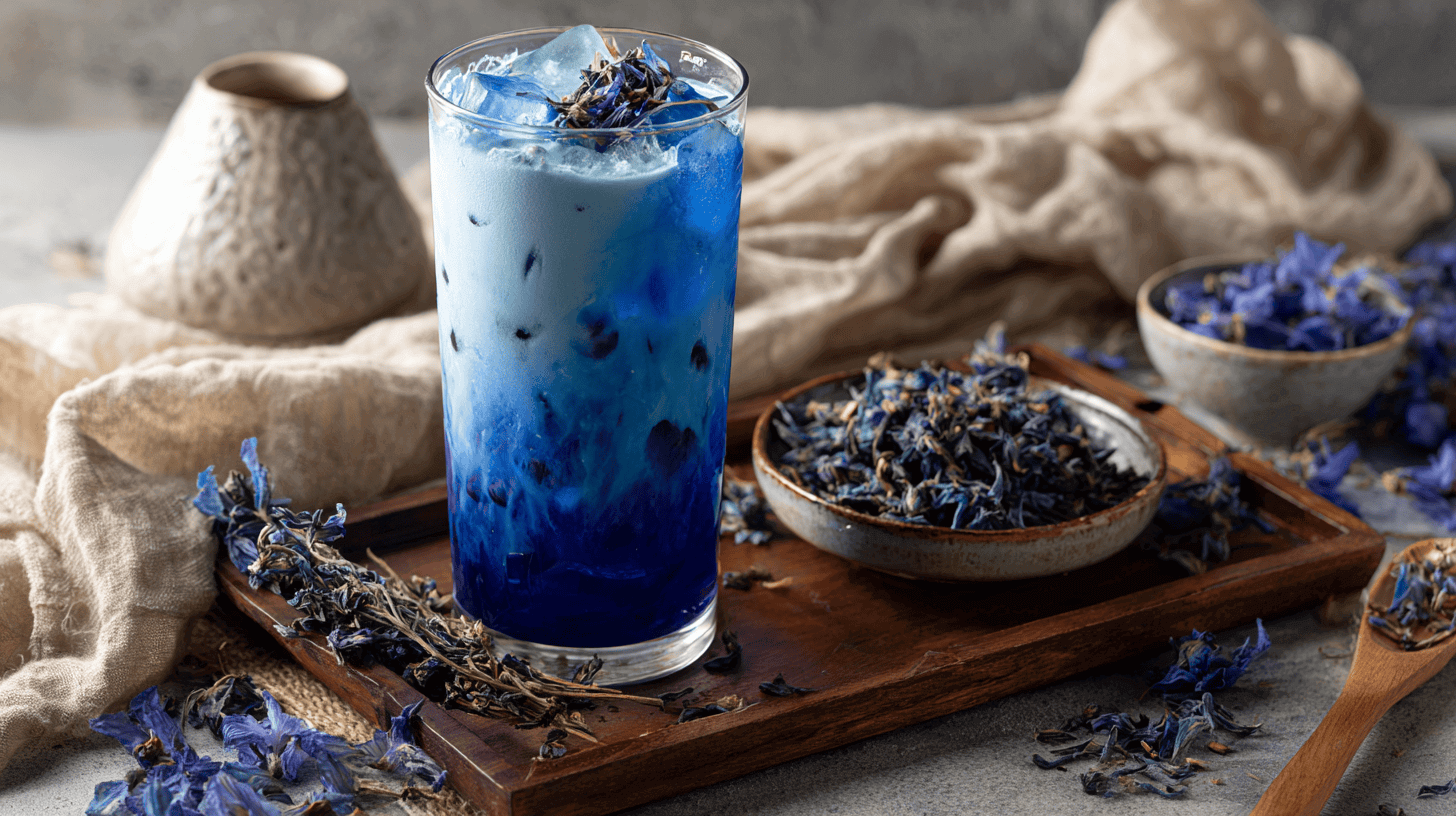Butterfly Pea Flower Tea isn’t just a drink it’s a visual experience, a health elixir, and a staple of Southeast Asian tradition. From its electric blue hue to its pH-driven color-changing magic, this naturally caffeine-free herbal tea has captivated tea lovers, foodies, and wellness seekers alike. In this guide, you’ll learn how to brew it perfectly, explore vibrant variations like butterfly pea lemonade and milk tea, and discover the science behind its antioxidants and health benefits. Whether you’re sipping for stress relief or styling an Instagrammable moment, this guide will show you exactly how to make butterfly pea flower tea that delights both the senses and the soul.
Table of Contents
What is Butterfly Pea Flower Tea? The Story of a Magical Blue Flower
A Brief History: From Southeast Asia to Your Teacup
My fascination with butterfly pea flower tea began during a wellness retreat in Thailand, where a vibrant blue drink arrived at my table no food coloring, just nature’s brilliance. Known as nam dok anchan in Thai culture, this tea has been brewed for centuries not just for its beauty but for its calming, healing qualities. Traditionally served in ceremonies and used to dye sticky rice and coconut milk desserts, butterfly pea flower tea symbolizes peace and balance. As someone who’s had to reimagine her health through diet, finding a beautiful, antioxidant-rich tea like this was like discovering nature’s own wellness tonic.
Print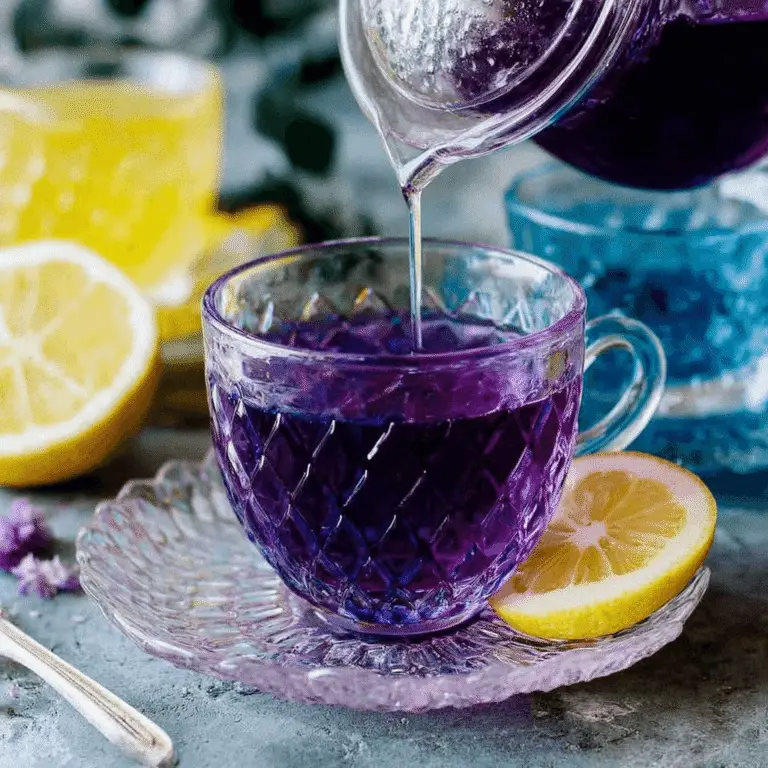
Butterfly Pea Flower Tea: Recipes, Benefits & Stunning Color Magic
Butterfly pea flower tea is a caffeine-free herbal tea known for its vibrant color and antioxidant benefits. This recipe shows you how to brew the perfect cup and create stunning color-changing variations.
- Total Time: 5–10 minutes
- Yield: 1 cup 1x
Ingredients
1–1.5 tsp dried butterfly pea flowers (6–8 blossoms)
1 cup hot water (just below boiling)
1 tsp honey or agave (optional)
1 tsp lemon juice (optional, for color change)
Ice cubes (for iced version)
Fresh herbs like mint or ginger (optional)
Instructions
1. Boil 1 cup of water and let it cool slightly before pouring over the dried flowers.
2. Steep for 5–10 minutes, depending on desired intensity.
3. Strain the tea and discard the flowers.
4. Add sweetener and optional herbs if desired.
5. For a color change, add lemon juice and watch it shift to purple or pink.
6. Serve hot or cool and pour over ice for an iced version.
Notes
For stronger flavor or color, steep longer or use more flowers.
This tea pairs beautifully with lemon, ginger, and mint.
Use it as a base for lattes, lemonade, or color-shifting cocktails.
- Prep Time: 5 minutes
- Cook Time: 0 minutes
- Category: Herbal Tea, Beverage
- Method: Steeping
- Cuisine: Thai, Southeast Asian
Nutrition
- Serving Size: 1 cup
- Calories: 5
- Sugar: 0
- Sodium: 0
- Fat: 0
- Saturated Fat: 0
- Unsaturated Fat: 0
- Trans Fat: 0
- Carbohydrates: 1
- Fiber: 0
- Protein: 0
- Cholesterol: 0
The Science of Blue: Understanding Clitoria ternatea and Anthocyanins
The vivid color of butterfly pea flower tea comes from anthocyanins, a class of flavonoids responsible for the plant’s deep blue hue. These natural pigments are pH-sensitive, which is why the tea changes color when lemon or other acidic ingredients are added shifting from blue to purple or even pink. This fascinating transformation isn’t just for looks; it’s pure chemistry. The flower, Clitoria ternatea, has long been studied not only for its vibrant properties but also for its antioxidant content. According to a study published in the National Library of Medicine, anthocyanins play a role in reducing oxidative stress and exhibit significant anti-inflammatory properties [source].
On Recipes Spoon, you’ll also find variations like butterfly pea milk tea and Black milk tea boba just two of the many ways to bring this color-changing tea to life.
The Complete Butterfly Pea Flower Tea Recipe Collection
The Classic: Hot & Iced Butterfly Pea Tea
When it comes to butterfly pea flower tea, mastering the basics opens the door to endless creative drinks. This naturally caffeine-free herbal infusion is as simple to make as it is stunning. Whether served hot or iced, the bold blue hue comes from steeping dried butterfly pea flowers in water. Here’s how to get it right.
Ingredients:
- 1 cup hot water (just below boiling)
- 1–1.5 tsp dried butterfly pea flowers (about 6–8 blossoms)
- Optional: honey, mint, ginger, or lemon
Instructions:
- Add dried flowers to a teapot or infuser.
- Pour in hot water and steep for 5–10 minutes.
- Strain and enjoy as-is, or add lemon to watch the color transform.
- For iced butterfly pea flower tea, cool and pour over ice with a splash of citrus.
This classic method gives you a base that’s incredibly versatile. On Recipes Spoon, you’ll find ways to turn your butterfly pea flower tea into a refreshing iced tea, or blend it with lemongrass for a fragrant twist.
The Café Favorite: Creamy Blue Tea Latte (Blue Matcha)
If you’re looking for a comforting, creamy twist, try a butterfly pea flower tea latte also known as blue matcha. It’s earthy, lightly floral, and beautiful in both taste and presentation.
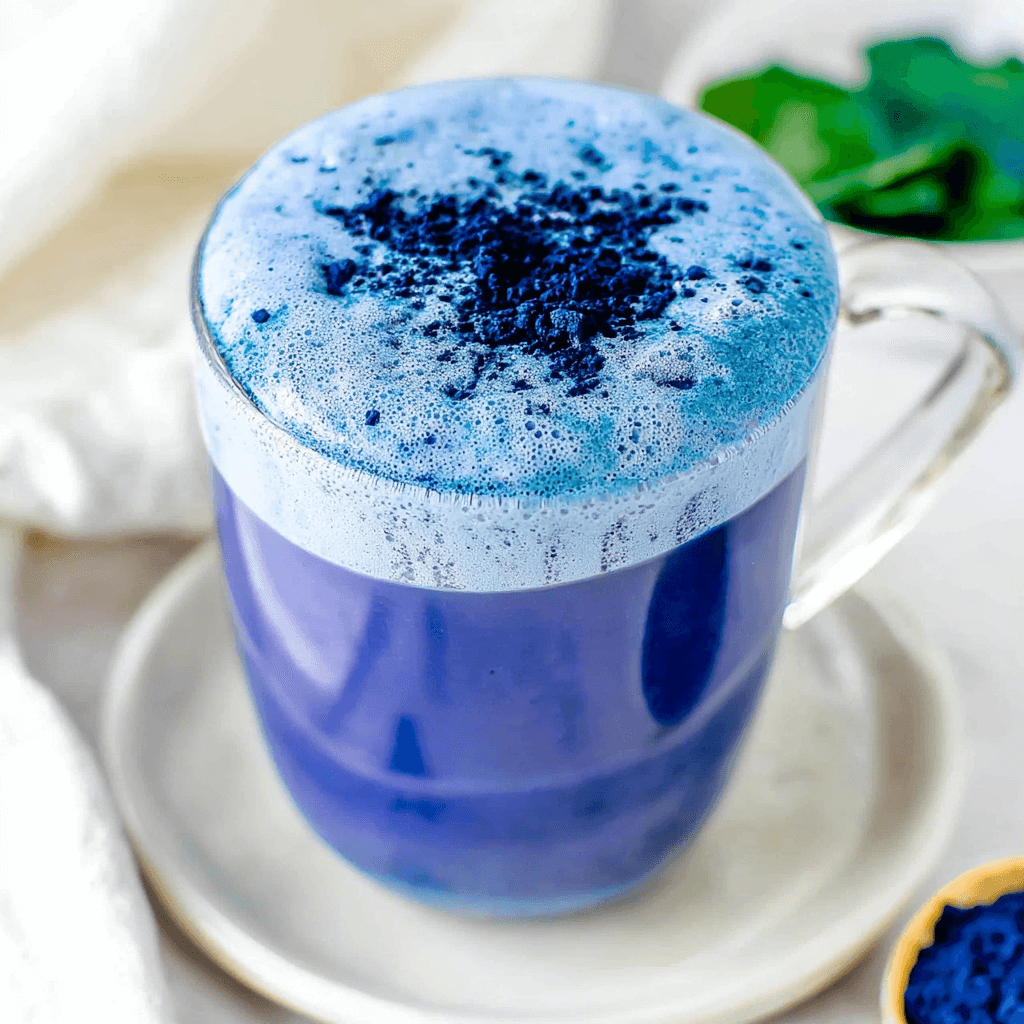
Ingredients:
- 1 tsp butterfly pea flower tea powder (or 1 tbsp concentrated brew)
- 3/4 cup steamed milk (plant-based or dairy)
- 1 tsp honey or maple syrup
- A splash of vanilla or cinnamon (optional)
Instructions:
- Mix the tea powder with hot water until fully dissolved.
- Add sweetener and vanilla.
- Pour over steamed milk, stir, and sip.
For a cool version, serve over ice. On our site, you can also try this as a butterfly pea milk tea or whip it into a fun Matcha boba milk tea with chewy pearls and coconut milk.
Butterfly pea flower tea isn’t just a drink it’s a canvas. You’re only one variation away from a whole new tea experience.
The Ultimate Refresher: Magical Color-Changing Lemonade
Butterfly Pea Tea with Lemon: A pH-Perfect Showstopper
If you’ve brewed butterfly pea flower tea, you’ve probably seen it turn a deep blue. But add a splash of lemon juice? It shifts before your eyes into a brilliant violet or even hot pink. This isn’t just a fun party trick. It’s a pH reaction, where the anthocyanins in the tea respond to acidity, creating an Instagrammable drink that doubles as a science lesson.
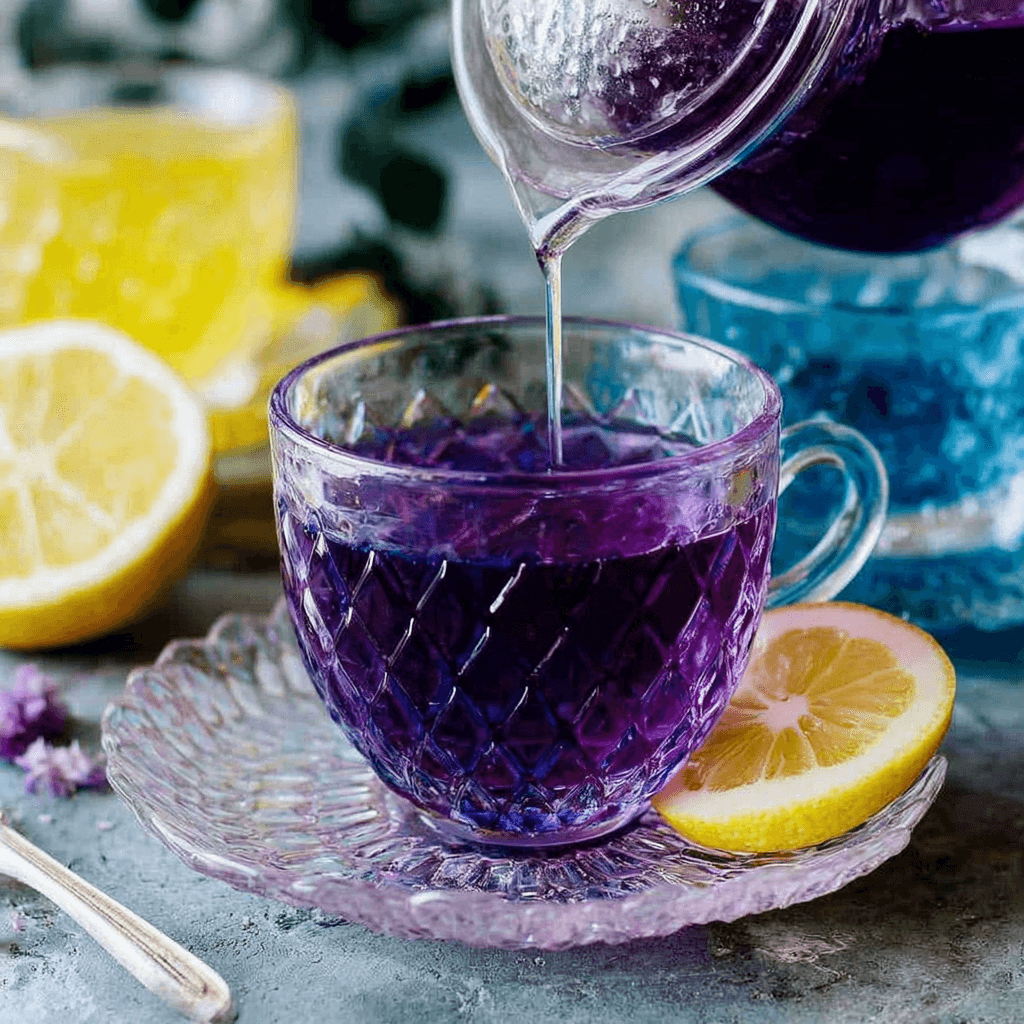
This magic is the secret behind butterfly pea lemonade, a vibrant, citrusy tea that’s become a favorite at summer gatherings and brunches. Here’s how to make your own color-changing refresher.
Ingredients for 2 Servings:
- 1 cup strong butterfly pea flower tea (cooled)
- 1 cup cold water or sparkling water
- Juice of 1 large lemon (freshly squeezed)
- 2–3 tsp honey or agave syrup (adjust to taste)
- Ice and lemon slices, for serving
Instructions:
- Brew a strong butterfly pea flower tea and allow it to cool.
- In a glass pitcher or shaker, mix the tea with cold water and sweetener.
- Just before serving, pour in the lemon juice and stir gently.
- Watch the color shift dramatically as the pH drops.
- Serve over ice with lemon slices or edible flowers.
This is one of the easiest ways to showcase the pH reaction in blue tea, and it’s become a hit on social media for good reason. On Recipes Spoon, we’ve also shared how to layer this lemonade over coconut milk for a stunning ombré effect ideal for a creative take on butterfly pea flower iced tea.
Instagrammable Drinks & Natural Food Coloring Ideas
Beyond just drinking it, many people use butterfly pea flower tea as a natural food coloring for smoothies, popsicles, and even rice. Its ability to shift colors with acid makes it a great way to create vibrant dishes without synthetic dyes. Whether you’re mixing up a rainbow mocktail or crafting a kid-friendly kitchen experiment, this tea delivers.
The Science-Backed Health Benefits of Butterfly Pea Flower Tea
Before we dive into the health benefits, let’s quickly compare the different forms of butterfly pea tea available.
| Form | Best Use | Pros | Cons |
|---|---|---|---|
| Dried Flowers | Brewing traditional tea, color-changing recipes | All-natural, vibrant color, authentic aroma | Requires straining, longer steeping time |
| Powder | Lattes, smoothies, baking, food coloring | Easy to mix, concentrated color, no steeping | May contain fillers, less traditional taste, can sometimes clump if not whisked properly |
| Tea Bags | Quick brews, travel-friendly | Convenient, pre-portioned, less mess | Often lower quality, weaker flavor, less control over steeping strength |
Antioxidant-Rich Protection
Butterfly pea flower is naturally high in anthocyanins flavonoid pigments that act as antioxidants. These compounds help fight oxidative stress, reduce free radical damage, and support cellular health.
Cognitive Support & Nootropic Potential
Traditionally used in Ayurveda for its memory-enhancing effects, butterfly pea flower has recently gained attention in modern brain health research. One study in the Evidence-Based Complementary and Alternative Medicine Journal showed that Clitoria ternatea extract improved learning and memory retention in animal models, attributed to its ability to increase acetylcholine levels a key neurotransmitter for cognitive performance [source].
Skin Health & Anti-Aging Effects
Thanks to its antioxidant-rich profile, butterfly pea tea may help protect the skin from premature aging. In fact, the Journal of Ethnopharmacology reported that Clitoria ternatea exhibits anti-glycation properties, which can prevent collagen breakdown and improve skin elasticity making it a natural ally for youthful-looking skin [source].
Caffeine-Free and Gut-Friendly
For anyone trying to cut back on stimulants, butterfly pea flower tea is naturally caffeine-free, making it a great option for kids or those sensitive to caffeine. It’s also alkaline-forming, meaning it may help with digestive comfort especially when consumed warm after meals.
Stress Relief & Anxiolytic Properties
Butterfly pea flower tea has been used for centuries in Southeast Asia as a calming evening drink. Modern science supports this traditional use. A study published in the Journal of Ayurveda and Integrative Medicine found that Clitoria ternatea extract exhibited significant anxiolytic (anti-anxiety) effects in animal models, suggesting potential benefits for mood regulation and stress relief [source].
Conclusion
Butterfly pea flower tea is more than just a pretty sip it’s a wellness-boosting, naturally colorful tea steeped in Southeast Asian tradition and supported by modern science. From its antioxidant and anti-inflammatory benefits to its Instagram-worthy color shift, this tea offers something truly unique for your cup. Whether you’re starting your day with a butterfly pea latte or winding down with an iced blue tea, this vibrant herbal infusion delivers both beauty and function.
On Recipes Spoon, you’ll find more creative ways to brew, blend, and enjoy this magical tea including Black Milk tea boba and blue tonic. Bookmark the page, brew a batch, and discover your favorite way to sip the blue.
And always listen to your body. Tried this recipe? Drop your favorite twist in the comments, and don’t forget to follow me on Pinterest and Facebook for more simple, healthy recipes you’ll love.
Frequently Asked Questions (FAQ)
How to make tea from butterfly pea flower?
To make butterfly pea flower tea, steep 1 to 1.5 teaspoons of dried butterfly pea flowers in 1 cup of hot water for 5–10 minutes. Strain, sweeten if desired, and enjoy warm or iced. You can also add lemon juice for a color-changing twist.
What goes well with butterfly pea flower tea?
This tea pairs beautifully with lemon, honey, ginger, mint, lemongrass, or coconut milk. You can also mix it into lemonade, lattes, smoothies, or even cocktails. For more ideas, check out our variations like butterfly pea milk tea
What are the benefits of butterfly pea tea?
As detailed in our guide above, it is rich in antioxidants and offers science-backed potential benefits for brain health, stress relief, and skin. For a full breakdown, please see our section on The Science-Backed Health Benefits of Butterfly Pea Flower Tea.
How to make blue tea for weight loss?
For a metabolism-friendly version, steep the flowers, let the tea cool, and add lemon or apple cider vinegar with a few drops of stevia or agave. It’s hydrating, low-calorie, and often consumed before meals to support digestion.
Are there side effects of butterfly pea tea?
Most people tolerate it well, but in rare cases, consuming large quantities may cause nausea or digestive upset. Those pregnant, nursing, or taking medication should consult a healthcare provider before regular use.
